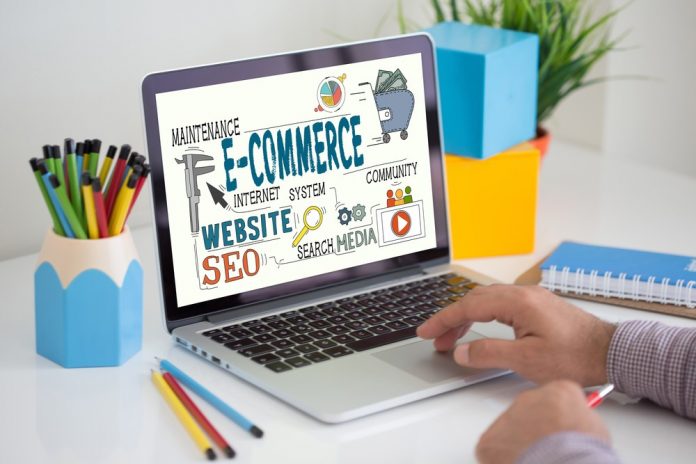With millions of eCommerce websites saturating the online market, it can be difficult to sift through good, bad, secure and unsecure websites.
What is noticeable to eCommerce website goers, however, is a site’s poor design, high processing fees, overabundance of pop-ups and slow-loading webpages. These factors alone could be contributing to the average of 69% of online customers who abandon their cart.
So, if your goal is customer retention, conversion and ultimately ‘delight,’ here is a four-point checklist that could put you on the path (if paired with other optimization tools and tactics) to achieving higher profits. These four points could also assist in increasing interaction with customers, seeing that they receive packages in one piece and most importantly, on-time.
eCommerce Website Builder or Developer?
First off, if you’re running a home business, I will give props where props are due. You’re your own boss, your morning commute is non-existent and you don’t have many if any at all, overhead costs. Now, let’s say you’re thinking of creating an eCommerce site to give your home business a more global reach.
Should you use an eCommerce website builder or hire a developer/designer? Not weighing the obvious, which is the massive price disparity between the two, you should also ask yourself:
- What are your short and long-term business goals?
- What is your budget?
- What are your expectations in terms of traffic and sales?
If one or more of your goals is to keep costs low, stay under budget for the overall project and to set realistic expectations for sales and website traffic — an eCommerce website builder makes the most sense for your business. Hiring a designer/developer actually means not only spending a boatload of money before you actually make a profit, but also the potential of not seeing an ROI.
With developers and designers, you have to constantly rely on them to make even the simplest of updates to your site. Whereas with a website builder, most things can be done by you from a computer, tablet or smartphone.
Simply put, unless you’re managing millions of dollars, it is not worth the headache to hire a developer — even then, companies like Tesla have come to understand the overall convenience and user-friendliness of eCommerce website builders, having built their shop using one.
Think About Fees & Relevant Integrations
For as many advantages as eCommerce builders come with, there are also some disadvantages, mostly in the form of additional fees. For this reason, it is important to know what fees above and beyond scheduled payments you’ll be responsible for.
Even though you will likely incur additional expenses, they do not even begin to compare to the cost of the initial building of a website and performing routine maintenance. Here are a few potential fees you should be aware of:
- Transaction fees for payments made through secure payment processing systems like PayPal and Square
- Charges for Google Analytics, email, integrations with eBay, Amazon, Etsy, etc
- Shipping fees
Some eCommerce builders are sophisticated enough to alert users when a would-be customer abandons their cart. This is done with the hope of merchants intervening with a coupon or other offers to ensure the sale is made.
You should also know the process of how your business funds are disbursed to the appropriate accounts.
- Does the process happen automatically or once-monthly?
- Are payments processed through third-party apps/integrations or directly through the platform itself?
- Lastly, if your home business has employees — can the platform fully or partially manage payroll?
Features like email marketing, the ability to email customers and respond to in real-time, 24/7 support or editing your site from your mobile device are all good features to have as well. If you have limitations on the number of products you can list on your site, know there’s a chance you’ll need to pay to list more products on your eCommerce site.
Some eCommerce platforms do not charge monthly fees for processing payments, but, rather, the company processing payments will charge a small percentage. This will happen either at the end of the month for all payments processed, or each time your business processes a new order.
You should familiarize yourself with these fees and know they will vary based on the method of payment used. I.E., an Amex could have higher fees than a Visa or MasterCard depending on the way the payment is processed.
Offline Considerations
Although your business is based online, making offline sales is also an important element of the equation. Thus, having a platform that enables you to track, sync and process offline transactions is massively imperative.
In the event that you attend a trade show, a conference or just want to sell offline, you shouldn’t have to manually keep track of sales. You should, though, have the option for customers to pay using credit cards with minimal fees for all parties involved.
If each transaction is being processed at 2.9 percent — this can get pricey and lead to a potential loss in profit if excessive enough. Also, think about processing fees and how they might differ if a payment is made in-person vs. the web.
You might find that it is more expensive to process offline fees, in which case, you’re merely paying extra for convenience.
Delivery & Tracking Options
Something often less thought of is: What happens after a customer makes a purchase and what fees are associated with delivery?
Are shipping labels automatically generated, how much of the shipping cost (if anything) are you responsible for, and what are your options in terms of shipping: FedEx, UPS, USPS? How expensive will it be to keep up with the demand and will you receive alerts when your inventory is running low?
Knowing when to replenish your inventory is key, as you don’t want to be caught between a rock and a hard place when you are close to a browser converting into a sale. This is probably one of the most important features to be on the lookout for if you run an eCommerce business.
Takeaways
The entire setup process can be a bit scary, but worth it in the end once you begin to witness the success of your brand online. Even if you’re not afraid of tackling the tech aspect of setting up an eCommerce website using a builder — there will undoubtedly be a few teachable moments along your journey to get your marketplace set up.
As a result, there are a ton of resources and tools out there for those looking to take their home business online, and online eCommerce website builders are just one part of the puzzle.
For starters, I’d highly recommend reading reviews of website builders specific to eCommerce sites, as they will help you gain further insight into what other features you should look for in an eCommerce site builder and even how to properly navigate the system.
Best of luck in choosing an eCommerce builder, and remember — with the millions of eCommerce websites out there, it can be difficult to sift through good, bad, secure and unsecure websites.
So, choose the platform that will give your site the extra sparkle needed to attract new customers and one with minimal fees and offline payment/sync options.
Hundreds of Business Opportunities – Visit the Home Business EXPO
Find a Home-Based Business to Start-Up >>> Hundreds of Business Listings.


















































